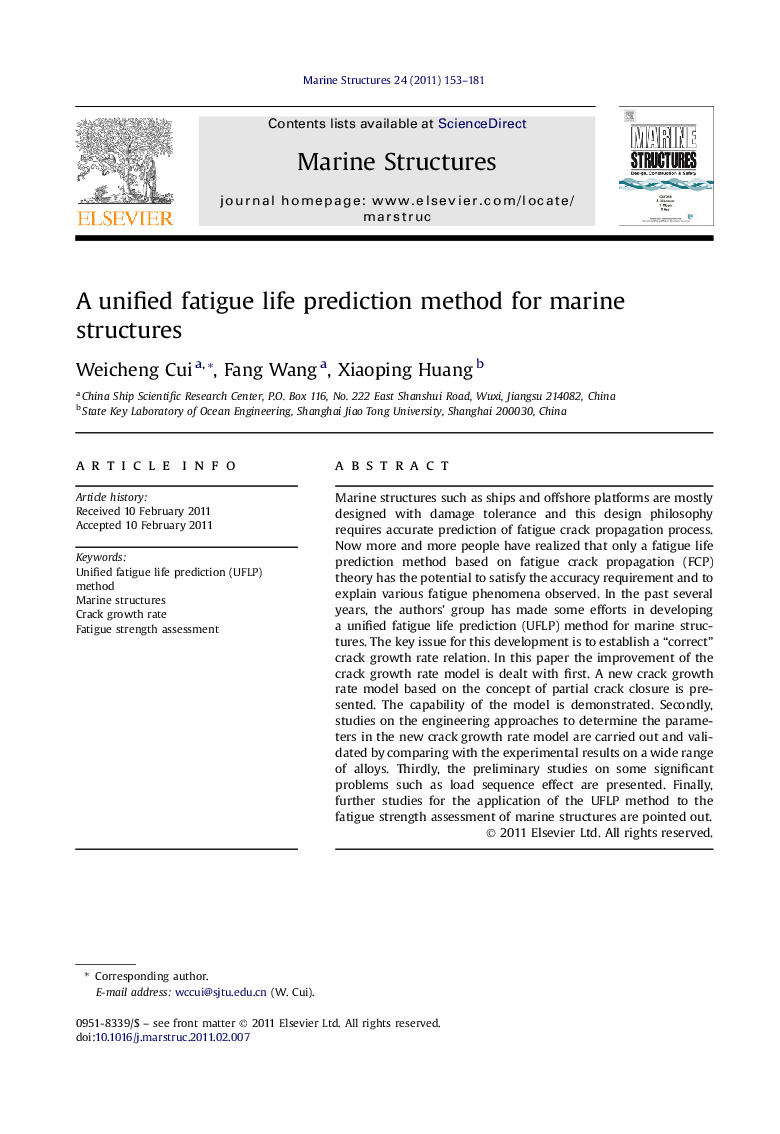| Article ID | Journal | Published Year | Pages | File Type |
|---|---|---|---|---|
| 294235 | Marine Structures | 2011 | 29 Pages |
Marine structures such as ships and offshore platforms are mostly designed with damage tolerance and this design philosophy requires accurate prediction of fatigue crack propagation process. Now more and more people have realized that only a fatigue life prediction method based on fatigue crack propagation (FCP) theory has the potential to satisfy the accuracy requirement and to explain various fatigue phenomena observed. In the past several years, the authors’ group has made some efforts in developing a unified fatigue life prediction (UFLP) method for marine structures. The key issue for this development is to establish a “correct” crack growth rate relation. In this paper the improvement of the crack growth rate model is dealt with first. A new crack growth rate model based on the concept of partial crack closure is presented. The capability of the model is demonstrated. Secondly, studies on the engineering approaches to determine the parameters in the new crack growth rate model are carried out and validated by comparing with the experimental results on a wide range of alloys. Thirdly, the preliminary studies on some significant problems such as load sequence effect are presented. Finally, further studies for the application of the UFLP method to the fatigue strength assessment of marine structures are pointed out.
